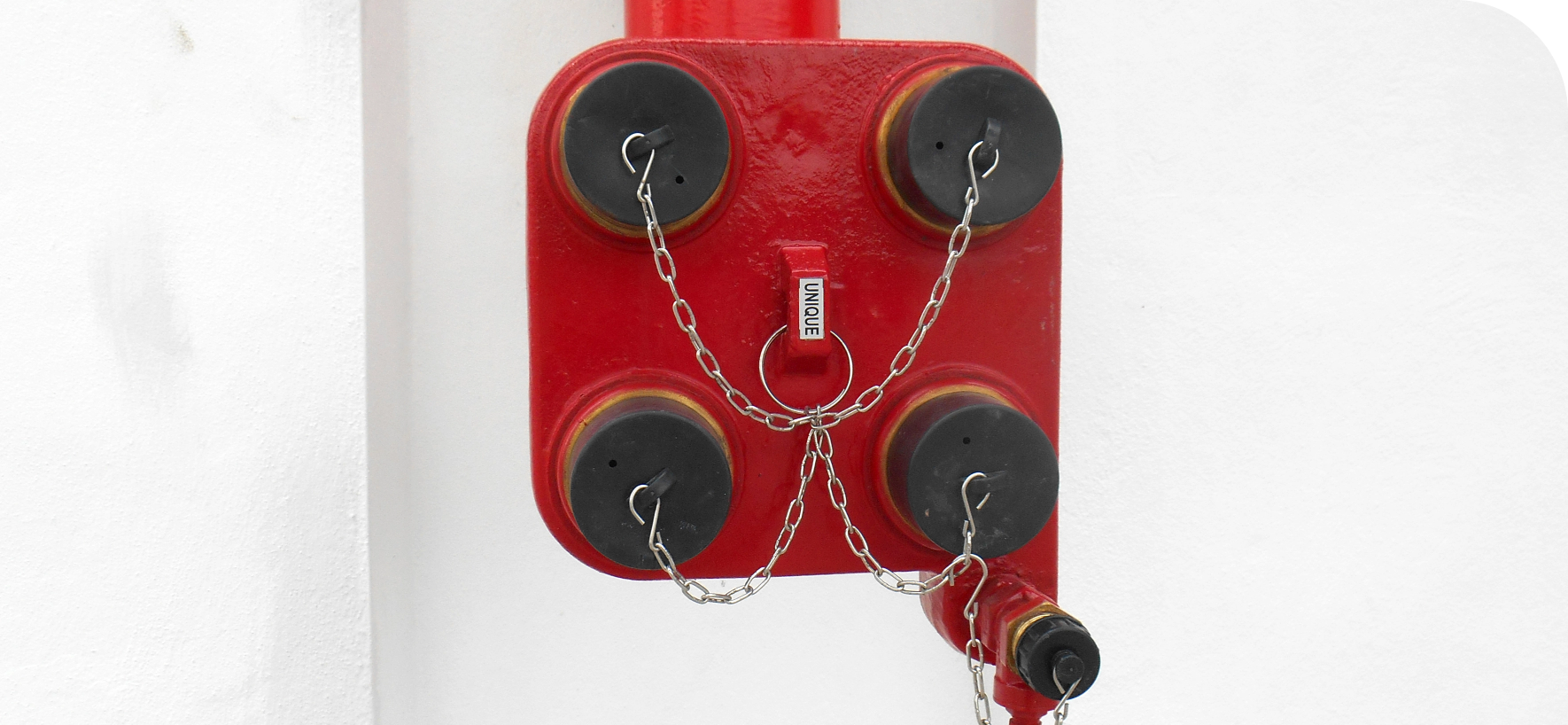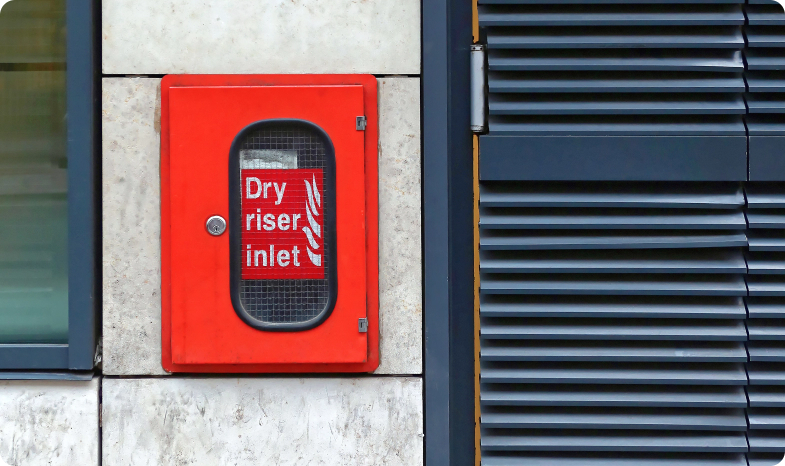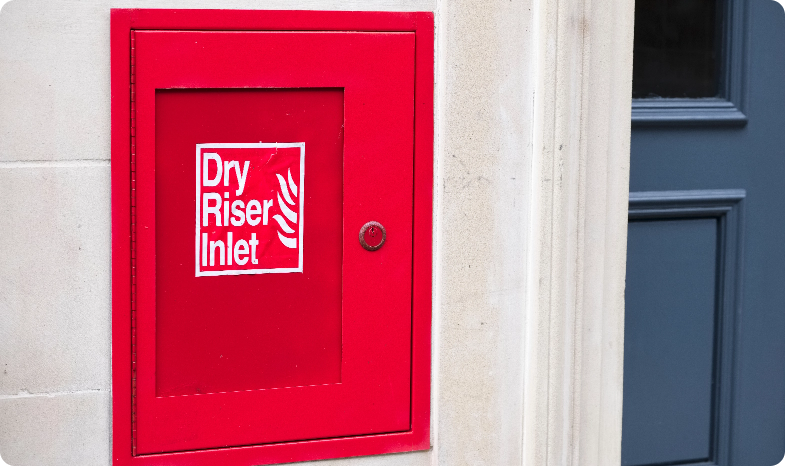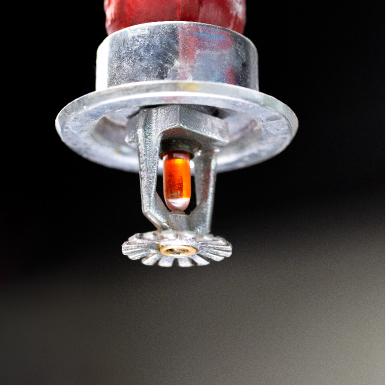Dry Risers and Wet Risers

Protect your medium and high-rise property with dry risers and wet risers
When it comes to fire safety, it is crucial to have the right equipment in place to protect your building and its occupants. Two common solutions for high-rise buildings are dry risers and wet risers. Dry risers are empty pipes filled with water when needed, whilst wet risers are constantly filled with water. The main difference between the two is that dry risers require a fire brigade to connect and pump water into the system, whereas wet risers have a constant water supply ready for use.
To protect your high-rise building and the people within it, contact the experts at Vipond to discuss the most suitable solution.


Protect your people, property, and assets from the threat of fire.
What are the differences between dry and wet risers?
The primary difference between the two systems lies in their operational mechanisms and the scenarios for which they are designed.
Dry risers, essentially a system of vertical pipes, are intended for buildings not exceeding 50 metres in height. They are not constantly filled with water; instead, they are equipped with inlet connections at ground level, allowing the fire service to pump water into the system on arrival during an emergency. This design is particularly suited for buildings where the pressure required to move water to higher floors can be externally supplied when needed.
In contrast, wet risers are permanent installations in buildings typically taller than 50 metres. These systems are continuously charged with water, ensuring a supply is immediately available at all floor levels for firefighting purposes. Wet risers are equipped with water storage tanks and pumps and often also feature backup power supplies to maintain operational integrity even during power outages, providing a constant state of readiness.
Simply put, the choice depends on the specific needs of a building, including its height and the practicality of maintaining a constant water supply for firefighting purposes.

Which businesses and buildings might need dry or wet risers?
Identifying whether a business or building needs dry or wet risers largely depends on the structure’s height and the nature of its occupancy.
Dry risers are commonly installed in medium-rise buildings, such as shopping centres, multi-storey car parks, and residential blocks that do not exceed 50 metres. These systems are ideal for buildings where direct intervention by the fire services is feasible and where the external pumping of water can meet emergency needs efficiently.
On the other hand, wet risers are essential for high-rise buildings exceeding 50 metres, including skyscrapers, hotels, and office towers, where the complexity and height of the building necessitate an immediate and reliable water source for firefighting efforts. These buildings benefit from the wet risers’ ability to provide a constant water supply at all floor levels, which is crucial for rapid fire suppression. Additionally, buildings that accommodate vulnerable individuals, such as hospitals and care homes, may also consider the installation of wet risers, regardless of their height, due to the critical need for rapid response in case of a fire.
The installation of both systems is covered by BS9990, which Vipond is fully compliant with.
Vipond can help businesses navigate the choice between dry and wet risers. Our fire safety experts can ensure compliance with fire safety standards and help adequately protect your assets and occupants at all times.
Which UK regulations cover the installation and maintenance of Dry and Wet Risers?
In the United Kingdom, the installation and maintenance of both dry risers and wet risers are governed by specific regulations and standards to ensure they function effectively during emergencies. For dry risers, the relevant standard is BS 9990:2015. This comprehensive code of practice details the requirements for installing, testing, and maintaining dry risers, aiming to ensure their reliability when needed. It covers aspects such as system components, design considerations, performance requirements, and the frequency and methods of testing and maintenance.
Similarly, wet risers are subject to strict guidelines, although they are primarily addressed through building regulations and the guidance found within approved documents. These documents refer to BS 9990:2015 and other relevant fire safety standards. These documents outline the design and installation criteria to ensure that wet risers are always ready for immediate use, including provisions for pumps, storage tanks, and backup power supplies.
Both sets of regulations underscore the importance of regular inspections and maintenance to safeguard operational integrity. It is essential for building owners and managers to adhere to these standards, not only to comply with legal requirements but also to ensure the safety and well-being of occupants and visitors in the event of a fire.
Vipond’s experts can help businesses maintain adequate fire safety to protect people, property, and assets. To discuss your requirements, contact Vipond today.
Our solutions

Protect your people, property, and assets from the threat of fire.





